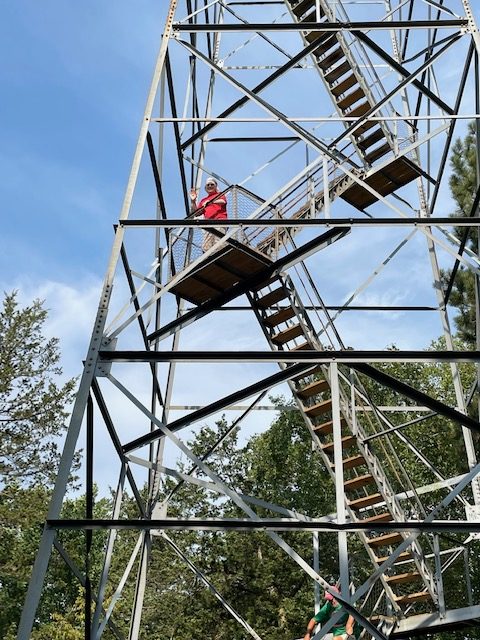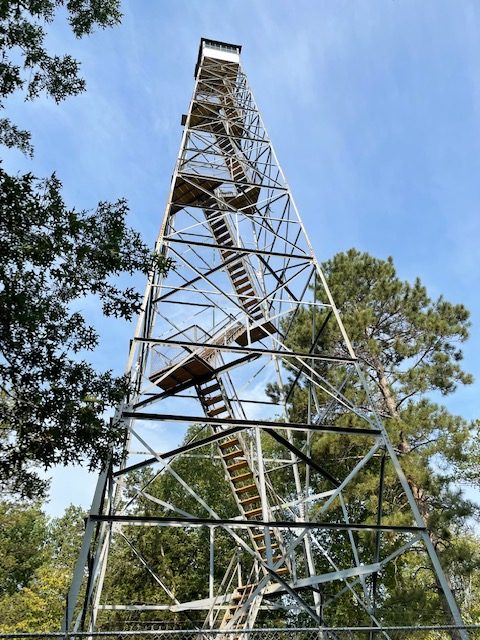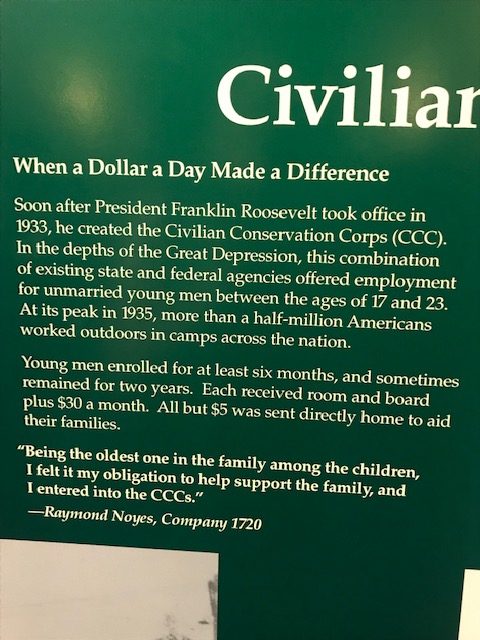We like to getaway and ride different bike trails. There are so many to choose from. This year we went to Pequot Lakes in northern Minnesota. Our first stop was in Crosby, Minnesota to ride our bicycles on the Cuyuna Trail System. These trails are well-known for mountain biking, but there is a nice paved trail to ride also.

The trail goes past old iron ore mine pits, which are now beautiful lakes, with no development on them. The mountain bike trails go through the woods, and a bicycle with special tires is needed. The mountain bike paths are red dirt, from the iron in the soil.

After our trail ride we continued to drive north to Pequot Lakes, our destination. We planned to ride our bikes the next day on the Paul Bunyan trail, one of the longest bike trails in the state. The Paul Bunyan Trail used to be the Burlington-Northern railway tracks.

We rode a small portion of the trail. The weather was hot and humid, but the portion of the trail we rode was shaded and scenic, with surrounding lakes. We’re grateful for the many wonderful trails that have been created on old railway lines.

The third morning we decided to hike in Paul M. Theide Fire Tower Park. The DNR recently acquired this land to create this park to protect the historic fire tower there. The small park is lovely with a nice picnic pavilion and a few trails that lead to the fire tower. The tower, built in 1935, is accessible to climb if one is so inclined. I learned this is the second tower to be built on this site. The first was a wooden structure built in 1927. The current tower is in excellent shape (no carvings in the wooden steps). I climbed up four flights (of eight) and was already above the tree line and could see for miles. Unfortunately, I left my camera down at the bottom.

Climbing the tower brought back memories of vacationing with my parents and friends in cabins on Rainy Lake in the 1960’s. There was a fire tower within walking distance of the resort where we stayed. We would climb the tower every year, several times during the week. I do remember some of us kids carving our names in the wooden steps. Whoops.
Several years later we went up to see the resort at the end of the road, Highway 11 East out of International Falls, and the fire tower was fenced in and locked up. I learned it’s called the Black Bay Fire Tower, or Rainy Lake Fire Tower, and it was built in 1939. I couldn’t find much more information online about this tower.

There is another accessible fire tower in Itasca State Park which we have climbed a few times; once with our two sons when they were younger, and a few times over the years when we’ve camped in the state park.
A few dozen fire towers remain in Minnesota. At one time there were 120-150 in the early to mid 1900’s. At that time there were about 5,000 fire towers throughout the United States. A majority of the “second generation” fire towers were built by the CCC (Civilian Conservation Corps) in the 1930’s. These towers were built of galvanized steel and included steps. Earlier towers were made of wood and used ladders to access the cab. As airplanes and modern technology took over the task of spotting wildfires, many towers were taken out of service.
I’m grateful for organizations that have insight and resources to re-purpose railway lines and preserve fire towers.







